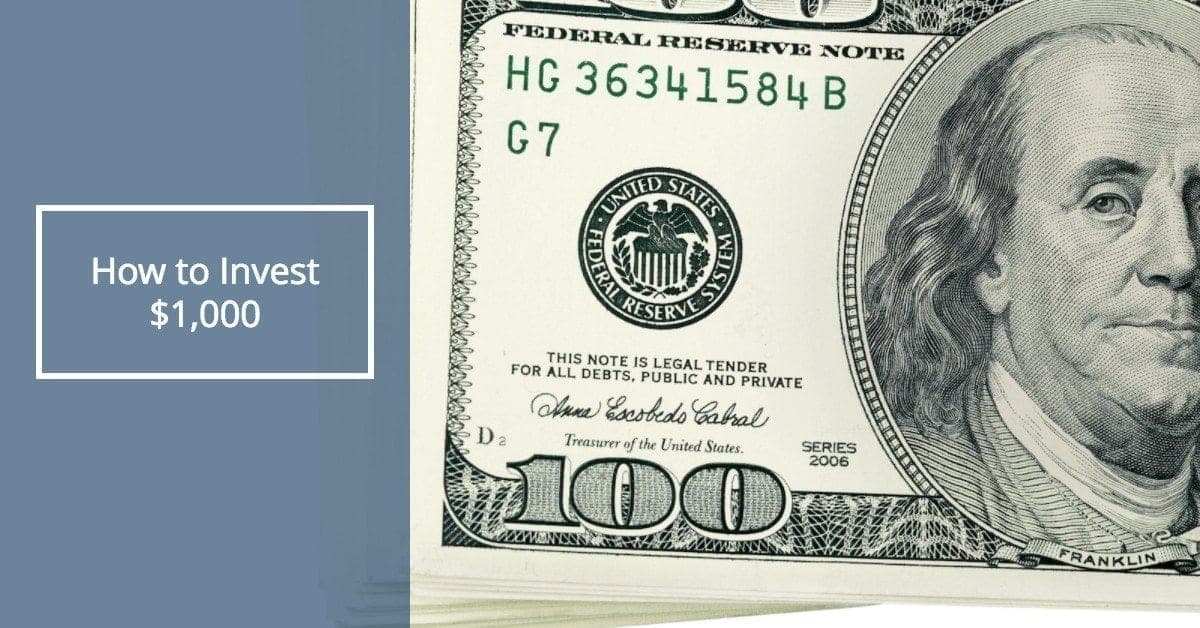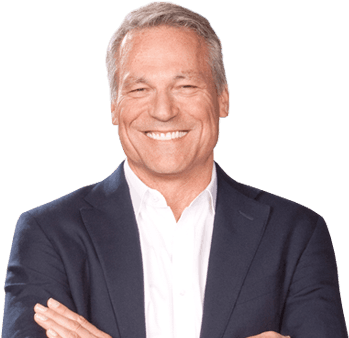There’s something powerful about that first thousand dollars you decide to invest. It might not seem like much on the surface—but it’s not about the amount. It’s about the mindset.
If you’re in your 20s or 30s, just starting out, and you’ve managed to set aside your first $1,000—well, first of all, congrats. That alone sets you apart. Now comes the bigger question: what should you do with it?
2025 is a weird, noisy year to begin investing. The headlines are packed with drama—rising interest rates, budget cuts, geopolitical turmoil, inflation, Tesla fires, you name it. There’s fear swirling in the media, but behind the curtain, trillions of dollars are being funneled into the U.S. economy.
So what does that mean? It means this market is ripe with opportunity. And if you know how to look for it, that $1,000 could become your first real stepping stone toward building long-term wealth.
Two Roads, One Destination: Building Wealth
There are really just two paths you can take with that first $1,000.
One is passive. The other is active.
Now, before you start wondering which one’s “better,” the truth is they both have value—it just depends on what kind of investor you want to be. Are you someone who wants to set it and forget it, letting the market slowly build your portfolio over time? Or are you ready to roll up your sleeves and learn to do what I do—invest with intention, in companies you understand and believe in, with the potential to seriously compound your wealth?
If you're leaning toward the first option, you’re not alone. That’s the approach a lot of people take, and it’s served them reasonably well over the years. It’s called passive investing.
The Passive Path: Easy to Do, But Is It Enough?
Passive investing is as simple as it gets. You buy into a broad index fund—like the S&P 500, using an ETF such as SPY—and you keep putting money in, no matter what the market is doing. This approach is known as dollar-cost averaging. You buy regularly, on a schedule, regardless of whether prices are up or down.
Historically, this method has delivered around 10% annual returns over the long run. And for folks who don’t want to dig into financial statements or learn how to value businesses, that’s a pretty solid return.
Warren Buffett himself has even recommended this strategy to people like LeBron James. It’s not flashy, but it works—especially when you give it time.
But here’s where I want to level with you: if you’re starting with just $1,000, passive investing might not move the needle in your life the way you hope it will.
Even at 10% annual growth, your $1,000 turns into about $2,594 after 10 years. Over 40 years, it could grow to $45,000. Not bad—but not life-changing.
On the other hand, what if you could bump that return to 15% per year? That same $1,000 would grow to more than $4,000 in 10 years. Over 40 years? You’re looking at over $260,000. And if you could hit even higher returns, like the investors I study and admire—Buffett, Mohnish Pabrai, Charlie Munger—you’d be in an entirely different financial universe.
That brings us to the second path.
The Rule #1 Way: Active, Intentional, and Rational
This is the path I’ve taken. And it’s what I teach.
Rule #1 Investing is about doing what the greats do. It’s not about gambling on trends or buying stocks because someone on YouTube said it was the next big thing. It’s about approaching investing the way a business owner would approach buying a business.
When I talk about Rule #1 Investing, I’m talking about finding great companies—companies that are simple to understand, have a durable competitive advantage, are led by trustworthy management, and are priced well below what they’re actually worth.
That’s our holy grail: buying a dollar’s worth of value for fifty cents. That margin of safety is what separates a smart investor from a speculator. And it’s what protects you when the market gets bumpy—which, as you’ve probably noticed, it often does.
Starting with just $1,000 is actually an advantage here. When you're small, you can afford to learn. You can take your time, practice analyzing businesses, make a few mistakes, and get better without risking your financial future. If something goes wrong, it’s not the end of the world—you can save again. But what you’re gaining is priceless: experience, insight, and confidence.
Beginner's Guide to Investing
Everything you need to kickstart your investing journey!
The Apple Example (And Why It Matters)
Let me give you a real-world example.
Back in 2016, Warren Buffett made a move that surprised a lot of people: he invested heavily in Apple. At the time, Apple was trading at a big discount to its intrinsic value. But Buffett saw what most didn’t: a massive moat in brand loyalty, smart management, and a balance sheet that was rock solid.
From 2016 to 2024, Apple delivered a 24.5% annual return. During that same period, the S&P 500—a benchmark for the market—averaged about 17.5%.
That’s the kind of upside you can uncover when you invest like a Rule #1 investor.
And you don’t need billions to start doing what Buffett did. You just need to understand the process, learn the tools, and have the discipline to follow through.
So What Should You Do With $1,000?
If you just want to park your money and let it ride, passive investing might suit you just fine.
But if you're hungry to learn how to actively build wealth—if you want to know how the best investors in the world consistently beat the market—you owe it to yourself to learn Rule #1 Investing.
The best way to do that? Join me for my 3-day online workshop. It’s packed with everything you need to get started. We’ll walk through:
How to find wonderful businesses
How to calculate their true value
How to know when the price is right
And how to build a portfolio you can be proud of—starting with just $1,000
I’ll even show you what I’d do, step by step, in today’s market environment.
Final Thoughts: Small Start, Big Future
You don’t need to have millions to build financial freedom. You need to start with what you have—and do it right.
$1,000 won’t change your life overnight. But invested the Rule #1 way, it might be the start of a journey that absolutely does.
Every great investing journey starts with a small step. This could be yours.
Attend a Rule #1 Workshop
Learn how to conduct research, choose the right companies for you, and determine the best time to buy.
**Editor’s Note (Updated 2025): This article was originally published in 2016 and has been significantly updated in 2025 to reflect current examples and Rule #1 investing insights.

